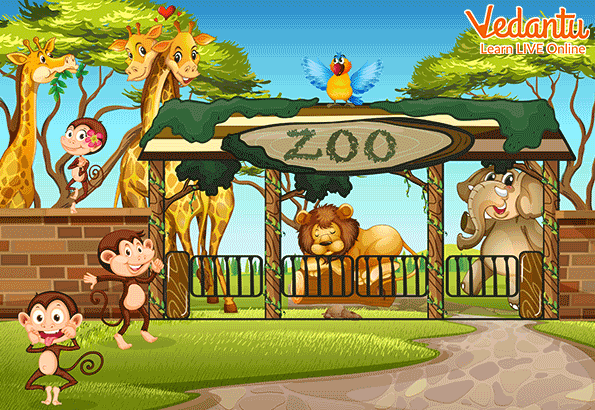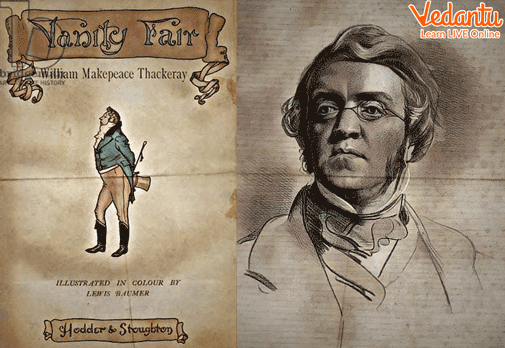Kids love singing and dancing to poems and songs as it brings them a change from the regular study. You are also often asked to recite your favourite poem in front of your relatives, isn’t it? So, this time be ready with the ‘At The Zoo’ poem, written by William Makepeace Thackeray. If you love visiting the zoo and watching different animals, then you will definitely love this poem too!
Let’s read together this poem about animals by mimicking every animal’s voice in it. It will be fun!
At the Zoo Poem
First I saw the white bear, then I saw the black;
Then I saw the camel with a hump upon his back;
Then I saw the grey wolf, with mutton in his maw;
Then I saw the wombat waddle in the straw;
Then I saw the elephant a-waving of his trunk;
Then I saw the monkeys—mercy, how unpleasantly they smelt!

Animals in ‘At The Zoo’ poem
Summary of the Poem
In ‘At the Zoo’ poem, the author, William Makepeace Thackery, is describing different animals that he sees at the zoo. He first saw a white bear and then a black bear. Then there was a camel with a hump on his back. After that, the author saw a grey wolf who had mutton, the meat of sheep, in his jaws.
He then saw a cute wombat, which was waddling in the straw laid for it. The author also saw an elephant waving his trunk, but in the end, he saw the monkeys, who were horrible smelling! The author also asked for forgiveness in the last line as he said this.
Though this poem contains a few words not meant for the young audience it was written for, the poem still manages to engage children with a fun depiction of the animals. The line about the monkeys smelling funny will, especially, make them laugh. A quick and short poem like this also helps keep the child’s attention.
Difficult Words in the Poem
Maw – The jaw of an animal.
Wombat – A type of plant-eating Australian animal which lives in burrows and looks like a small bear.
Waddle – Walking with short steps, like ducks.
Mercy – Forgive/ forgiveness
Smelt – Rarely used old word for ‘smelled’.
About the Author: William Makepeace Thackeray
The well-known English poet, William Makepeace Thackeray, was born on 18 July 1811 in Calcutta (now Kolkata), India. He was a British novelist, author, and illustrator, best known for his novels, The History of Henry Esmond, Esq. published in 1852 and Vanity Fair, published in 1848. His works first appeared in weekly magazines, mainly Fraser and Punch.

William Makepeace Thackeray
Thackeray’s father worked for the East India Company, based in India, while his mother was the daughter of a secretary (writer) for the East India Company. William didn’t live in India, as he attended school in England from a young age. Not a fan of formal education, Thackeray travelled through Europe, engaged in gambling and socialising, until he began working as a journalist when he moved back to London.
Apart from several novels, he also began writing poems while in school, which included ballads and satirical work. He had some very productive periods of writing; however, due to his poor diet and lifestyle, Thackeray was a victim of declining health. Thus, he died unexpectedly on December 24, 1863, in London.
Tips for Parents and Teachers
You can make this poem fun for kids by clapping each word out in a particular tune. You can start moving around while still clapping. Then you can add the actions or mimic different voices of each animal mentioned in the poem!
Also, by reading this poem to children, you can help your child know about different animals and their characteristics.


FAQs on At the Zoo Poem for Kids in English
1. In this poem, what characteristics of animals are described?
Thackeray has described the physical traits of animals in the first three lines. In the next two lines, he has described what the animals are doing. In the last line, the author has described how the animals smelled like.
2. Why should children be taught the ‘At the Zoo’ poem from a young age?
Making children read poems like ‘At the Zoo’ teaches them how to read, write, and understand the language. It helps develop kids’ speaking and listening skills and also enhances their vocabulary.





